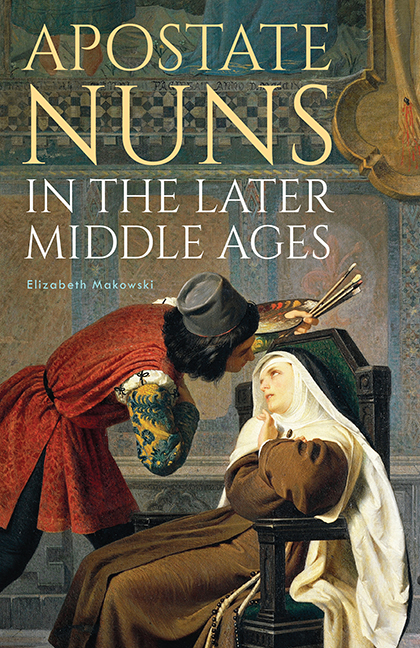Book contents
- Frontmatter
- Contents
- Preface
- Acknowledgements
- List of Abbreviations
- Introduction
- Part I The Vowed Life
- Part II Casting Off the Habit of Religion
- 2 Force and Fear
- 3 Land, Lust, and Love
- 4 Diversions and Disasters
- Part III Prodigals Return
- Conclusion
- Bibliography
- Index
- Other volumes in Studies in the History of Medieval Religion
2 - Force and Fear
from Part II - Casting Off the Habit of Religion
Published online by Cambridge University Press: 18 September 2019
- Frontmatter
- Contents
- Preface
- Acknowledgements
- List of Abbreviations
- Introduction
- Part I The Vowed Life
- Part II Casting Off the Habit of Religion
- 2 Force and Fear
- 3 Land, Lust, and Love
- 4 Diversions and Disasters
- Part III Prodigals Return
- Conclusion
- Bibliography
- Index
- Other volumes in Studies in the History of Medieval Religion
Summary
Entrants into religious life were always presumed to have answered a call from God. Aptly termed a vocation, this call issued from the deep well-spring of the soul, and it led individuals to seek spiritual perfection via the ordered life of monastic ritual and routine. For them, the monastery was a structured environment within which to craft personal salvation, a school for the Lord's service. The school was demanding, the lessons never fully mastered, and the routine penitential in its sameness as well as in its ascetic particulars, but for those called by God the monastery was a safe haven as well. It was a place to which one might become particularly attached, the ‘sweet and beloved dwelling’ immortalized by Alcuin, a refuge from which the monk or nun might never wish to be parted.
When this presumption did not hold, when the summons to religion came not from God but from parents, relatives, or other interested parties, the story was completely different. For those compelled to enter, the monastery became a prison. And, like prisoners anywhere, those forced to enter were naturally keen to escape when and if the occasion presented itself. For victimized women with means, opportunity, the evidence to support their claims, and no small amount of persistence, escape came not by flight, but by filing a petition. As established in the previous chapter, late medieval canon law provided that if religious profession had been coerced, or was in some other way technically flawed, it might be nullified upon petition to the papacy. If successful, the petitioner received a declaratory letter stating that the vows she had been forced to take were null and void. The secular status of the petitioner was thus fully restored, and she would be free to leave the confines of the cloister and return to society.
The most common ground for petitions to nullify vows was the allegation of vim et metum, force and fear. In cases alleging force and fear, ecclesiastical decision-makers consistently cited a rule of law that had been derived from a decretal letter of Pope Alexander III (1159– 1181) which was included in the Liber Extra.
- Type
- Chapter
- Information
- Apostate Nuns in the Later Middle Ages , pp. 45 - 77Publisher: Boydell & BrewerPrint publication year: 2019

